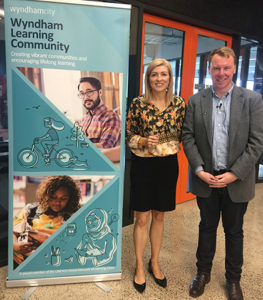Visual learning can help CALD students – expert
Visual cues and multimodal forms of learning can help students from non-English speaking backgrounds bridge engagement gaps in the classroom, according to a leading expert on literacy and digital culture.
Professor Kathy Mills, a researcher multimodal literacy learning in primary education at the Australian Catholic University, says multimodal forms of learning have the potential to create agile and inter-culturally aware learning communities.
 Speaking recently at a ‘WynTalk’ held in Werribee, Prof Mills said that the gateway to learning is open to members of the dominant group or culture while members of minority groups often struggle with systems and structures.
Speaking recently at a ‘WynTalk’ held in Werribee, Prof Mills said that the gateway to learning is open to members of the dominant group or culture while members of minority groups often struggle with systems and structures.
She said that teaching patterns often used in classrooms can sometimes ostracise culturally and linguistically diverse (CALD) students, who may have receptive language but not expressive language.
“Too often silence is tied to difference not deficit,” Prof Mills said.
She said that while the production and sharing of emotive, multimodal texts is becoming ubiquitous, their use is rarely addressed in the literacy curriculum.
Prof Mills’ work to assist children to understand the grammar of emotions used different techniques including animation.
She said that animation was useful as emotions are often exaggerated and can be more easily understood and the use of emojis enabled children to learn the linguistic resources to hook onto the emojis.
Videography was also useful to show children what emotions look like on people’s faces, she said.
Prof Mills said educators needed to build language resources for students to show and evoke emotions multi-modally and that animations can help students gain richer understandings of vital interpersonal language for success.
“Many students from ethnic or indigenous communities were marginalised because of the use of English in class,” Prof Mils said.
“This amounts to ‘hidden discourses’ for some students,” she said.
Prof Mills said her studies in classrooms had shown these students could became engaged in class by the use multi-modal techniques and by visual learning cues.
She said educators could play a role in implementing these techniques.
“We need to see teachers guiding skilful and enriched use of grammars for affect in the digital world,” Prof Mills said.
“And future research needs to address multi-modal communication of emotions across different media, cultures and age groups,” she said.












